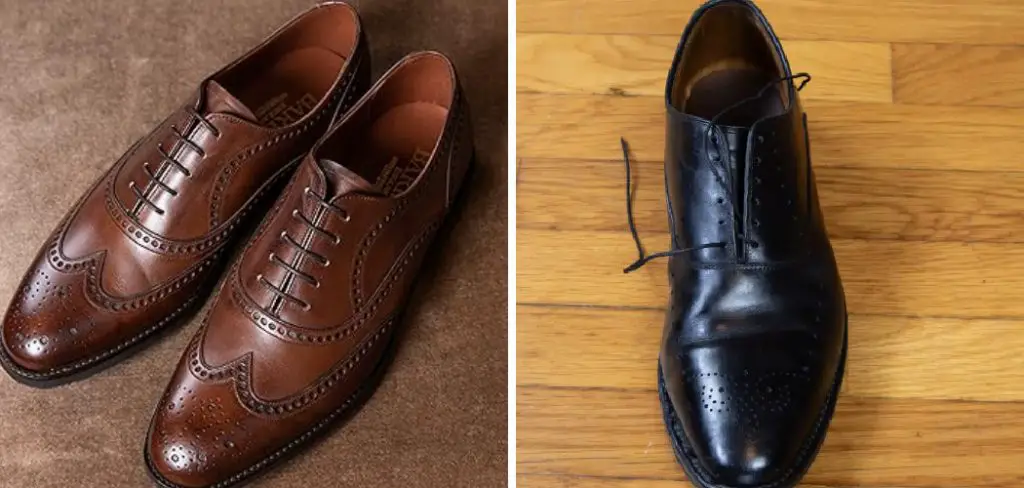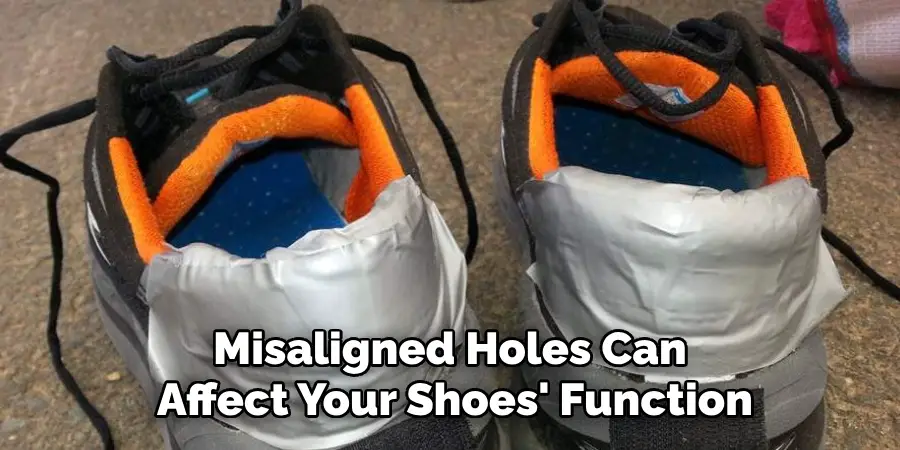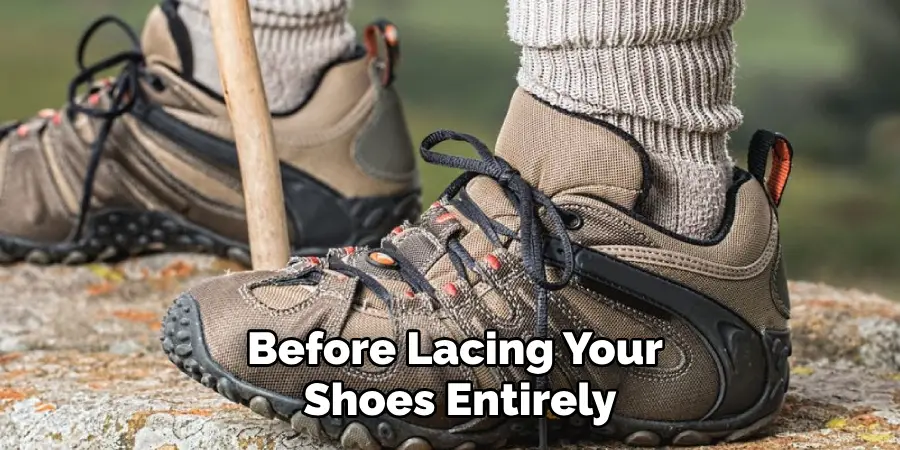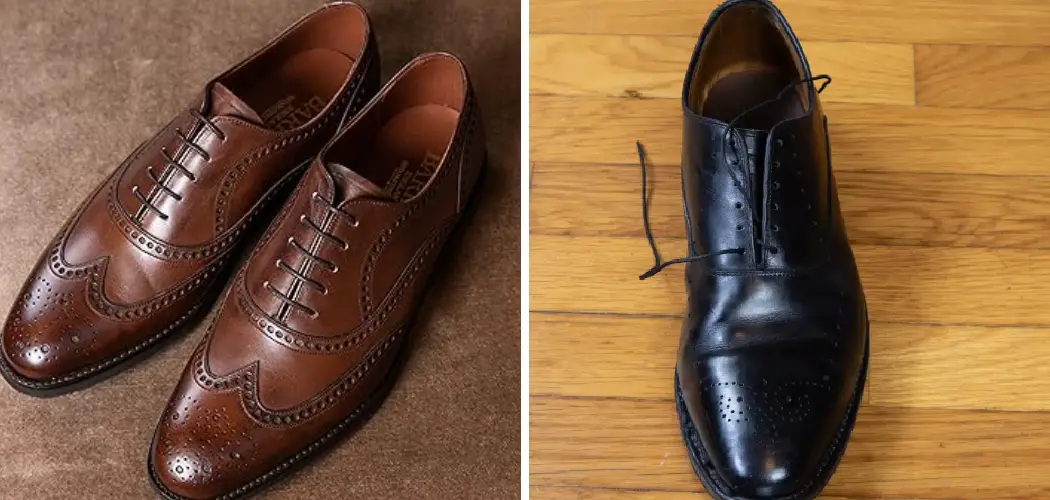Are you tired of your shoes slipping off? Are you looking for a solution to keep your laces in place and prevent them from getting tangled or coming undone?
How to add lace holes to shoes can be a simple yet effective way to customize and enhance your footwear. Whether you’re looking to modify an old pair of sneakers or personalize a new set of shoes, creating additional lace holes can improve the fit and add a unique touch to your style.
This guide will walk you through the materials needed and the step-by-step process to safely and efficiently add lace holes. This will allow you to give your shoes a refreshed and tailor-made appearance. By following these steps, you can ensure your newly added lace holes are durable and aligned with your desired look.

What Will You Need?
To add lace holes to your shoes, you will need the following materials:
- A pair of shoes (any type such as sneakers, boots, or dress shoes)
- Hole punch pliers or a leather hole punch tool
- Ruler or measuring tape
- Marker or chalk
- Optional: rubber mallet for heavy-duty shoe materials
It’s important to note that the size and shape of your new lace holes will depend on the type and style of your shoes. For example, if you have more giant shoes with thicker laces, you may want to create bigger holes than smaller shoes with thinner laces.
10 Easy Steps on How to Add Lace Holes to Shoes
Step 1. Measure and Mark:
Before you begin adding lace holes, it’s crucial to have an accurate layout to ensure symmetry and consistency in your footwear. Using a ruler or measuring tape, determine the positioning for the new holes. Ensure that these positions are equidistant from existing holes if you add more on the same eye-row. Mark the spots clearly with a marker or chalk to provide a guide for the punching process.
Take into account the width of the shoe and the overall aesthetic you desire; this will ensure that the new lace configuration complements the existing design. Double-check your measurements and marks to avoid misplacements, as misaligned holes can affect your shoes’ function and look.
Step 2. Prepare Tools and Workspace:
Set up your workspace to ensure you have sufficient lighting and an even surface to work on. Gather your hole punch pliers or leather hole punch tools, making sure they are clean and in good working condition. If you’re working with heavier shoe materials, having a rubber mallet on hand can aid in the punching process. Assemble all your materials within reach so you can work efficiently without interruptions.
Ensure that the shoe sits securely on the surface to prevent shifting during the punching process, which can lead to inaccurate hole placement.

Step 3. Punch the Holes:
With your shoe securely in place, take the hole punch pliers or leather hole punch tool and align it with the first marked spot. Apply firm and even pressure to puncture the material, ensuring that the hole is clean and well-defined. If you’re using a rubber mallet, position the punch over the mark and gently tap with the mallet until the hole is created.
Repeat this process for each marked spot, taking care to follow the alignment closely. Consistency is vital, so ensure every hole matches your initial marking plan. Take your time during this step to prevent mistakes leading to uneven lacing.
Step 4. Clean Up the Holes:
After punching, it’s essential to ensure each hole is clear of any excess material to facilitate smooth lacing. Inspect each hole closely, looking for any jagged edges or bits of material that might have not been fully removed during the punching process. Use a small pair of scissors or a utility knife to carefully trim any loose fibers or uneven edges.
Additionally, for leather or similar materials, consider using a small amount of edge dressing or burnishing gum to smooth out the ends and enhance the durability of the holes. This additional step adds a polished finish and protects the material from wear and tear. Ensuring the integrity and neatness of each hole will ultimately lead to better-functioning lacing and extend the life of your shoes.
Step 5. Test the New Holes:
Before lacing your shoes entirely, it’s essential to test the new holes to ensure they are appropriately sized and aligned. Take a lace and gently thread it through each new hole, checking for ease of entry and any resistance. This will help confirm that no additional adjustments are needed. If you encounter difficulty threading the lace, revisit the hole in question and carefully adjust it using your tools until it can pass through smoothly.
Testing also provides an opportunity to make sure that the added holes complement the existing ones aesthetically, maintaining a cohesive look on your footwear. Once satisfied with the fit and appearance, you can lace up your shoes fully, confident in the enhanced function and style.

Step 6. Lace Your Shoes:
You can now lace your shoes fully with the new holes successfully added and tested. Start by choosing the lacing pattern that best fits your style or functional needs. Thread the laces through the holes as desired, balancing the distribution on both shoes for a uniform appearance. This is your opportunity to play with different styles — consider crisscross, straight bar, or ladder lacing to give your footwear a distinct look. Ensure the lacing is snug but not too tight to maintain comfort and flexibility while wearing the shoes.
Adjust the laces as necessary to achieve the right tension across all eyelets. This final step secures the shoe on your foot and completes the personalized touch you’ve added to your apparel.
Step 7. Final Adjustments and Inspection:
After lacing your shoes, take a moment to perform a final inspection and make any necessary adjustments. Walk around a bit to ensure that the shoes are comfortable and the laces provide adequate support without causing any discomfort or excessive pressure. Check that the alignment and tension of the laces are consistent and that there are no loose ends or uneven spacing.
This is also an excellent time to inspect the newly added lace holes for any signs of wear or stress that might have occurred during the initial use. If you notice any areas needing attention, make the required adjustments to enhance the fit and appearance. Once you’re satisfied with the fit, your shoes are ready for regular use, showcasing enhanced functionality and personalized style.

Step 8. Maintain Your Shoes:
Proper maintenance ensures the longevity of your newly modified shoes. Regularly inspect the laces and holes for signs of wear or damage, especially when the material undergoes frequent stress. Clean your shoes with suitable products to remove dirt and moisture, which can weaken the materials over time. For leather shoes, consider applying a leather conditioner to preserve the suppleness and vibrancy of the material.
Additionally, rotate your footwear usage to allow the shoes to breathe and recover from daily wear. By adhering to a maintenance routine, you’ll keep your shoes’ functionality and appearance at their best, prolonging their life and sustaining the personalized improvements you’ve made.
Step 9. Enjoy Your Customized Shoes:
With all the modifications and checks complete, it’s time to enjoy your newly customized shoes. Whether you’ve added new holes for better fit and comfort or altered the style to express your personal fashion sense, relish in the unique transformation you’ve achieved. Wearing your shoes now enhances your appearance and brings a sense of accomplishment, knowing the effort and care put into tailoring them to suit your needs.
Wear them with pride, and let them accompany you confidently on all your adventures, showcasing your creativity and attention to detail.
Step 10. Share Your Experience:
After enjoying your customized shoes’ personalized fit and style, consider sharing your experience with others. Sharing your process and results can inspire friends or peers to undertake their customization projects. Whether through social media, a blog post, or in discussions with fellow shoe enthusiasts, detailing your steps and tools can provide valuable insights and tips for others.
Highlight any challenges you faced and how you overcame them, offering learning experiences that could be useful to someone else embarking on a similar journey. Your story could guide those looking to enhance their footwear, fostering a community of creative and resourceful individuals.
By following these steps, you can successfully customize your shoes and elevate both their functionality and style.

Conclusion
How to add lace holes to shoes is a practical and creative way to tailor footwear to your specific needs and style preferences.
By carefully following detailed steps—from planning the layout and selecting the right tools to final lacing and maintenance—you ensure a professional finish that balances function with aesthetics. This process empowers you to customize shoe fit and comfort while showcasing individuality through unique design choices.
With the knowledge and confidence gained from modifying your shoes, you can tackle similar projects in the future, continually enhancing your wardrobe with personalized touches.

